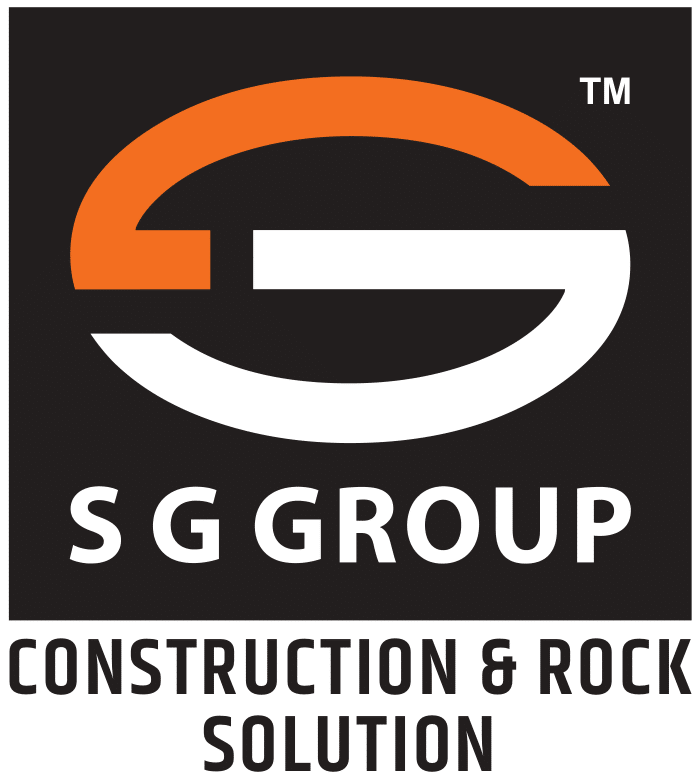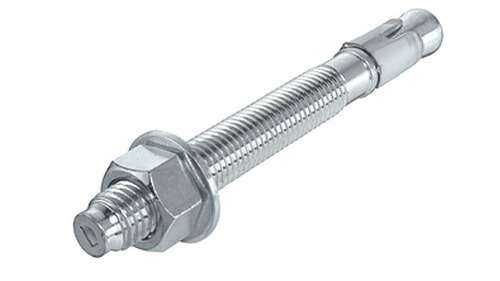Our Mechanical Anchoring Services encompass Fixing of Insertion Plates, execution of various other anchoring jobs like fixing machine base plates, hand rails, doors and window frames, rehabilitation of falling stones from the facades of the buildings and Stone cladding using Clamps & Fasteners.
Mechanical anchors are mostly used to fasten elements to the main structural concrete such as beams, columns and slabs. Post-installed mechanical metal fasteners are placed into pre-drilled holes in the concrete and anchored therein by mechanical means such as friction or mechanical interlock. For post-installed mechanical fasteners, a distinction is made according to their principle of operation.
The most popular type of mechanical fasteners are torque controlled expansion anchors, which have a main advantage when compared to chemical anchors – the possibility of push-through installation. Torque controlled expansion anchors also guarantee high load-bearing capacity combined with easy application and quick installation time. The positioning and securing of even the heaviest elements is also more convenient and simple as it eliminates the need of pre-positioning. The expansion is achieved by a torque acting on the bolt. The tension force applied to the fastener is then transferred into the concrete via friction and, to a limited extent, via keying (mechanical interlock) between the expansion sleeve and the deformed concrete.
Due to many years of experience in creating innovative solutions and the production of construction fasteners which allow a significant reduction of installation parameters such as minimum spacing, edge distance, as well as minimum thickness of concrete. Interaction between the bolt’s cone and sleeve enables high load-bearing capacity with ideal tensile stress distribution, so that the anchor can also be used at optimal edge and spacing distances. Groups of mechanical fasteners characterized by deformation-controlled expansion – achieved by hammer blows or by percussion of a machine – are mainly utilized for performing various types of fixings in MEP and HVAC building services and resist lower loads. Bolts or threaded rods are screwed directly into the internal thread of a hammer set anchor.
Another type of mechanical anchor are concrete screws. Concrete screws are screwed into a pre-drilled cylindrical hole and feature a special thread, which cuts an internal thread into the concrete member while setting. The fastening is characterized by mechanical interlock in the concrete thread. One of the advantages of concrete screws is that they generate much less expanding forces during installation. Load is also distributed across a larger area of the entire length of the anchor. This feature enables even closer edge and spacing distances than torque controlled expansion anchors. The essential characteristics of concrete screws offer fastest installation among all post-installed fasteners as they do not need to be set to a specific torque during installation. Only distance must be controlled to obtain the full contact of the screw head with the fixture while screwing into the pre-drilled hole by using an impact screwdriver.
Mechanical anchoring services involve the installation of anchors using mechanical devices to secure structures, equipment, or components to a substrate. Mechanical anchors are commonly used in construction and engineering applications where a reliable and robust attachment is required. Here’s an overview of the mechanical anchoring service:
- Site Assessment:
- Before starting the mechanical anchoring process, a thorough site assessment is conducted. This includes evaluating the substrate material, load requirements, and any specific conditions that may influence anchor selection.
- Anchor Selection:
- Based on the site assessment, engineers choose the appropriate type of mechanical anchor for the specific application. Common types include expansion anchors, wedge anchors, screw anchors, and others.
- Drilling Holes:
- Mechanical anchors require pre-drilled holes in the substrate to accommodate the anchor. The diameter and depth of the holes are determined by the anchor type and load requirements.
- Cleaning and Preparation:
- After drilling, the holes are cleaned to remove dust, debris, and other contaminants that could affect the anchor’s performance. Proper preparation ensures a solid bond between the anchor and the substrate.
- Inserting Anchors:
- The mechanical anchors are inserted into the pre-drilled holes. The method of insertion varies depending on the type of anchor, but it often involves tightening, expanding, or engaging mechanisms to secure the anchor in place.
- Torqueing or Tightening:
- Some mechanical anchors require specific torque values or tightening procedures to ensure optimal performance. This step is crucial for achieving the desired load-bearing capacity.
- Load Testing:
- After the anchors are installed, load testing may be conducted to verify their capacity to withstand the intended loads. This ensures that the mechanical anchors provide the required level of safety and stability.
- Documentation:
- Proper documentation of the installation process, including anchor types, drilling specifications, torque values, and load test results, is essential for quality control and future reference.
- Safety Measures:
- Adherence to safety standards is a critical aspect of mechanical anchoring services. This includes using appropriate personal protective equipment, following safe drilling practices, and ensuring a secure work environment.
- Quality Control:
- Mechanical anchoring services should include quality control measures to ensure that the anchors are installed correctly, meeting design specifications and industry standards.
Mechanical anchoring services involve the installation of anchors using mechanical devices to secure structures, equipment, or components to a substrate. Mechanical anchors are commonly used in construction and engineering applications where a reliable and robust attachment is required. Here’s an overview of the mechanical anchoring service:
- Site Assessment:
- Before starting the mechanical anchoring process, a thorough site assessment is conducted. This includes evaluating the substrate material, load requirements, and any specific conditions that may influence anchor selection.
- Anchor Selection:
- Based on the site assessment, engineers choose the appropriate type of mechanical anchor for the specific application. Common types include expansion anchors, wedge anchors, screw anchors, and others.
- Drilling Holes:
- Mechanical anchors require pre-drilled holes in the substrate to accommodate the anchor. The diameter and depth of the holes are determined by the anchor type and load requirements.
- Cleaning and Preparation:
- After drilling, the holes are cleaned to remove dust, debris, and other contaminants that could affect the anchor’s performance. Proper preparation ensures a solid bond between the anchor and the substrate.
- Inserting Anchors:
- The mechanical anchors are inserted into the pre-drilled holes. The method of insertion varies depending on the type of anchor, but it often involves tightening, expanding, or engaging mechanisms to secure the anchor in place.
- Torqueing or Tightening:
- Some mechanical anchors require specific torque values or tightening procedures to ensure optimal performance. This step is crucial for achieving the desired load-bearing capacity.
- Load Testing:
- After the anchors are installed, load testing may be conducted to verify their capacity to withstand the intended loads. This ensures that the mechanical anchors provide the required level of safety and stability.
- Documentation:
- Proper documentation of the installation process, including anchor types, drilling specifications, torque values, and load test results, is essential for quality control and future reference.
- Safety Measures:
- Adherence to safety standards is a critical aspect of mechanical anchoring services. This includes using appropriate personal protective equipment, following safe drilling practices, and ensuring a secure work environment.
- Quality Control:
- Mechanical anchoring services should include quality control measures to ensure that the anchors are installed correctly, meeting design specifications and industry standards.
It’s important to hire experienced professionals for mechanical anchoring services to ensure that the anchors are installed correctly and securely. Different types of anchors and substrates may require specific expertise, and proper installation contributes to the safety and stability of structures or equipment.

